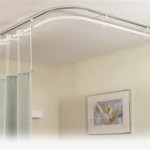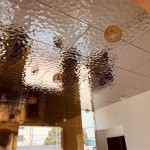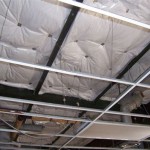Simple False Ceiling Design Photos For Living Room
False ceilings, also known as dropped ceilings, are secondary ceilings suspended below the main structural ceiling of a room. They serve both aesthetic and functional purposes, offering a versatile way to enhance the look and feel of a living room while also providing benefits such as improved acoustics, concealing unsightly wiring and ductwork, and energy efficiency. When considering a false ceiling design for a living room, simplicity often emerges as a desirable attribute. Simple designs can provide a clean, modern aesthetic that complements various interior design styles without overwhelming the space. This article explores different simple false ceiling design options suitable for living rooms, accompanied by illustrative examples and relevant considerations.
The appeal of simple false ceiling designs lies in their ability to enhance the visual appearance of the room without introducing unnecessary complexity or clutter. A minimalist approach can create a sense of spaciousness and sophistication, especially in smaller living rooms where complex designs may feel overwhelming. Simple designs are often characterized by clean lines, subtle textures, and a focus on functionality. They are also generally easier and less expensive to install compared to more elaborate designs, making them a practical choice for many homeowners.
Key Point 1: Exploring Popular Simple False Ceiling Design Options
Several simple false ceiling design options are commonly used in living rooms. Each option offers a unique aesthetic and can be tailored to suit specific room dimensions, lighting preferences, and overall design themes.
1. Plaster of Paris (POP) False Ceilings: POP is a widely used material for creating false ceilings due to its versatility, affordability, and ease of installation. Simple POP false ceiling designs often involve a smooth, level surface with minimal detailing. These ceilings can be painted in a variety of colors to match the room's décor, and they can also be integrated with recessed lighting fixtures to create a warm and inviting ambiance. A common design involves a simple rectangular or square POP ceiling that covers the entire room, with recessed lights strategically placed to provide uniform illumination. Another variation includes a slightly dropped POP ceiling around the perimeter of the room, creating a subtle border effect.
2. Gypsum Board False Ceilings: Gypsum board, also known as drywall, is another popular choice for false ceilings. It is lightweight, fire-resistant, and relatively easy to work with. Similar to POP ceilings, gypsum board ceilings can be designed with a simple, clean aesthetic. A common design is a flat, seamless gypsum board ceiling that spans the entire room. The surface can be painted, textured, or even wallpapered to achieve the desired look. Gypsum board ceilings are particularly well-suited for concealing wiring and ductwork, creating a clean and uncluttered appearance.
3. Grid False Ceilings: Grid false ceilings, also known as suspended ceilings, are composed of a metal grid framework that supports individual ceiling tiles or panels. While often associated with commercial spaces, grid ceilings can also be used in residential settings, particularly in living rooms with a modern or industrial aesthetic. Simple grid ceiling designs typically involve a basic grid pattern with plain white or off-white tiles. These ceilings are easy to install and maintain, and they provide excellent access to the space above for maintenance and repairs. The tiles can also be replaced easily, allowing for quick and simple updates to the room's appearance.
4. Wooden False Ceilings: Wood can add warmth and character to a living room, and simple wooden false ceiling designs can be a beautiful addition. Wood can be used in various ways, such as creating a simple panelled ceiling or incorporating wooden planks into a POP or gypsum board ceiling. A simple wooden false ceiling might involve a series of parallel wooden planks that are suspended below the main ceiling, creating a rustic or Scandinavian-inspired look. The wood can be stained or painted to match the room's existing décor.
5. Coffered Ceilings (Simplified): While traditional coffered ceilings are often elaborate, they can be simplified for a more contemporary look. A simple coffered ceiling design might involve a grid of shallow recesses in a POP or gypsum board ceiling, creating a subtle textured effect. The recesses can be painted a different color than the rest of the ceiling to highlight the design. This type of ceiling adds visual interest without overwhelming the space.
Key Point 2: The Role of Lighting in Simple False Ceiling Designs
Lighting plays a crucial role in the overall aesthetic and functionality of a living room with a false ceiling. The type and placement of lighting fixtures can significantly impact the mood and ambiance of the space. Simple false ceiling designs often incorporate recessed lighting, which provides a clean and modern look while offering excellent illumination.
1. Recessed Lighting: Recessed lights are installed directly into the false ceiling, creating a seamless and unobtrusive lighting solution. They are available in a variety of sizes, shapes, and light outputs, allowing for customized lighting designs. Recessed lights can be used to provide general illumination, accent lighting, or task lighting, depending on their placement and intensity. In a simple false ceiling design, recessed lights are often arranged in a grid pattern to provide uniform illumination throughout the room. They can also be used to highlight specific features, such as artwork or architectural details.
2. Cove Lighting: Cove lighting involves concealing light sources behind a ledge or molding, creating a soft and diffused glow. This type of lighting can be incorporated into a simple false ceiling design by creating a recessed area around the perimeter of the room. LED strip lights are often used for cove lighting, as they are energy-efficient and provide a consistent light output. Cove lighting can add a touch of elegance and sophistication to a living room, and it can also be used to create a relaxing and inviting atmosphere.
3. Pendant Lights: While simple false ceiling designs often prioritize recessed lighting, pendant lights can be used to add a focal point to the room. A single pendant light can be suspended from the center of the false ceiling, or a series of pendant lights can be arranged above a dining table or seating area. When choosing pendant lights for a living room with a simple false ceiling, it is important to select fixtures that complement the overall design aesthetic. Simple, minimalist pendant lights are often a good choice, as they will not overwhelm the space.
4. Spotlights: Spotlights can be used to highlight specific features in the room, such as artwork or architectural details. They can be installed directly into the false ceiling or mounted on tracks that are attached to the ceiling. Spotlights are particularly useful for creating dramatic lighting effects and adding visual interest to a simple false ceiling design.
5. Dimmers: Incorporating dimmers into the lighting system allows for greater control over the ambiance of the room. Dimmers can be used to adjust the brightness of the lights, creating a more relaxing or energetic atmosphere as needed. This is especially useful in a living room, where the lighting needs may vary depending on the activity.
Key Point 3: Considerations for Choosing a Simple False Ceiling Design
Selecting the right simple false ceiling design for a living room involves considering several factors, including the room's size, shape, and style, as well as the homeowner's budget and aesthetic preferences. It is essential to carefully evaluate these factors to ensure that the chosen design complements the existing space and meets the desired functional and aesthetic goals.
1. Room Size and Height: The size and height of the living room are important considerations when choosing a false ceiling design. In smaller rooms, a simple, flat false ceiling can help to create a sense of spaciousness. Avoid designs that are too elaborate or that significantly lower the ceiling height, as these can make the room feel cramped. In larger rooms, more complex designs may be appropriate, but it is still important to maintain a sense of balance and avoid overwhelming the space. The height of the ceiling is also a factor to consider. If the ceiling is already low, it may be best to opt for a minimal false ceiling design or avoid one altogether.
2. Interior Design Style: The false ceiling design should complement the overall interior design style of the living room. For example, a modern living room might benefit from a simple, minimalist false ceiling with clean lines and recessed lighting. A traditional living room might be better suited to a simple coffered ceiling or a POP ceiling with subtle detailing. Consider the colors, materials, and textures used throughout the room when selecting a false ceiling design to ensure a cohesive and harmonious look.
3. Budget: The cost of installing a false ceiling can vary depending on the materials used, the complexity of the design, and the labor costs involved. It is important to establish a budget before beginning the design process and to choose a design that is within your financial reach. Simple false ceiling designs are generally less expensive to install than more elaborate designs, making them a practical choice for budget-conscious homeowners. Get quotes from multiple contractors to ensure you are getting a fair price.
4. Maintenance: Consider the maintenance requirements of the chosen false ceiling design. Some materials, such as POP, may require periodic painting or repairs. Grid ceilings may require occasional cleaning of the tiles. Choose a design that is easy to maintain and that will not require excessive upkeep. Access to the space above the false ceiling is also an important consideration for maintenance purposes. Ensure that the design allows for easy access to wiring, ductwork, and other utilities.
5. Acoustic Properties: False ceilings can improve the acoustic properties of a living room by reducing echo and reverberation. This can be particularly beneficial in rooms with hard surfaces, such as tile or hardwood floors. Consider the acoustic needs of the room when selecting a false ceiling design. Acoustic tiles or panels can be incorporated into the design to further enhance sound absorption.
6. Professional Installation: While some homeowners may be tempted to install a false ceiling themselves, it is generally recommended to hire a professional contractor. A professional will have the experience and expertise to ensure that the ceiling is installed correctly and safely. They can also provide valuable advice on design options and material selection. Getting a professional installation will ensure the longevity and safety of the false ceiling. They will also be able to address any unexpected issues that may arise during the installation process.
By carefully considering these factors and exploring the various simple false ceiling design options available, homeowners can create a living room that is both aesthetically pleasing and functionally sound, enhancing the overall comfort and value of their home.

15 Luxurious Ceiling Designs For Modern Living Rooms

Beautiful False Ceiling Tile Designs For Your Home Homes

Modern False Ceiling Designs For Drawing Rooms Elevate Your Space Beautiful Homes

11 False Ceiling Design Ideas Can Reform Your Living Space

Top 18 Modern False Ceilings Ideas For 2025 Dwello

Best False Ceiling Design Ideas For Living Rooms In 2025 Gyproc

Simple False Ceiling Design Colorwale

False Ceiling Designs You Can Actually Use 72 Rates

7 Simple False Ceiling Design Ideas For Your Hall

15 Luxurious Ceiling Designs For Modern Living Rooms
Related Posts








